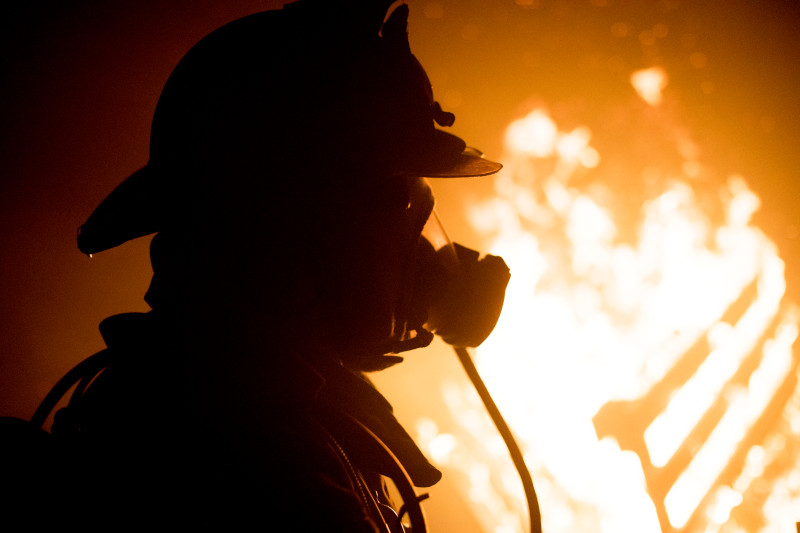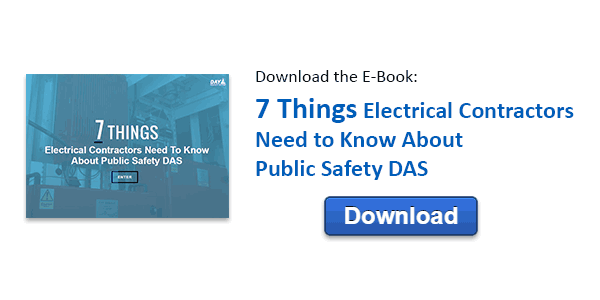An emergency situation can strike anywhere and anytime. It’s crucial to maintain infrastructure that can support the communications needs of first responders. Without a properly configured public safety distributed antenna system (DAS), the Safer Buildings Coalition noted that two-way radios may not be able to function well in critical areas inside buildings, such as stairwells, elevators and basements.
The History of Public Safety DAS
The terrorist attacks that took place on Sept. 11, 2001, exposed several security and safety vulnerabilities. Federal, state and local regulations were implemented to ensure greater preparedness for crisis situations across the country.
In-building emergency communications were among the issues that needed to be addressed. First responders who entered the World Trade Center buildings were not able to communicate via two-way radio back to dispatch to be warned of the imminent danger. This left them vulnerable to the unfortunate events that happened on that date.
The primary technological solution to allow radio communications, especially in larger buildings, would be a bidirectional amplifier (BDA) along with a distributed antenna system throughout the building. Simply described, this entails taking a radio signal from the outside, bringing it into the building and amplifying the signal throughout the facility using a network of antennas.
As subsequent fire codes were developed and adopted internationally and across the country, standards related to public safety DAS have become more comprehensive. Issues such as fire survivability, battery backup life of the units and system performance have evolved over the years.
Public Safety DAS Compliance Challenges
In addition to ensuring higher safety standards for new and existing buildings, compliance with public safety DAS requirements must be verified in order to receive a valid certificate of occupancy. In order to achieve compliance, building administrators need to successfully navigate some specific challenges.
Fire Code Variations
Fire codes are regularly created, updated and released by independent agencies, including the National Fire Protection Association (NFPA) and the International Code Council (ICC). Municipalities will adopt various codes at different times, such as the National Fire Code and the International Fire Code, developed, respectively, by the NFPA and ICC. DAS installation requires familiarity with the various differences between codes and across time.
The great thing is, you do not need a crystal ball to see the future requirements for each municipality. Because most municipalities adopt code books that are between two and four years old, we can look at trends for these codebooks to determine what the DAS requirements will be in your area.
Some overall trends we’ve noticed in the evolution of these codes include:
- Language continues to be refined to more clearly state the expected guidelines.
- Survivability requirements — which define what is needed for the system to withstand the introduction of hazards — have been clarified.
Terminology has been revised to be more consistent across different building systems.
While many authorities having jurisdiction (AHJ) have focused on cleaning up their own code documents for better alignment with the code books, other AHJs still need assistance figuring out how to update their documents and enforce standards. The staff at Day Wireless Systems are equipped to help.
In general, to implement up-to-date codes, you can reach out to Day Wireless if you are:
- An AHJ looking for an integrator with templates and process documents so you don’t have to start from scratch.
- A contractor or building owner trying to find the right integrator for a public safety DAS and the appropriate equipment for meeting the standards that apply in your jurisdiction. An AHJ looking for an integrator with templates and process documents so you don’t have to start from scratch.
Differences in Code Adoption by Locality
Many local governments may adopt new codes at a slower rate than their neighbors, meaning that some may comply with the 2020 version of a specific code, while nearby states or cities use codes from 2020 or earlier. Even within the same region of a state, requirements can vary greatly.
Adding to this complexity is the fact that local municipalities may amend their codes, adding or removing regulations to suit their purposes. Overall, the trend seems to be moving toward greater adoption of protective public safety DAS standards using more recent codes.
Standards by Structure and Retrofitting Requirements
Based on the type of building being constructed, as well as its location and purpose, the structure may be required to meet different public safety DAS standards from the fire code.
In addition, if emergency personnel continue to experience radio problems in specific buildings, owners may be required to retrofit the infrastructure in order to meet higher-level standards. This can be a costly process, so it pays to get things right the first time.
Emerging Trends in Public Safety DAS Compliance
In this frequently shifting field, it’s important to stay up to date. Here are some trends that we expect to grow in importance over the coming months and years.
Industry Credentialing
Since DAS implementation provides such an important public safety service, it’s crucial to know that you can trust the individuals who are installing your system.
The industry is moving toward more standardized credentialing. In December 2019, the National Institute for Certification in Engineering Technologies and the Safer Buildings Coalition announced a partnership to create a certification program for Emergency Responder Radio Communications Systems. Also, in March 2020, ETA International said that the organization would update its DAS certification to cover rules from the Federal Communications Commission concerning public safety two-way radios.
As credentialing updates expand, we expect to see more requests for proposal that specify a need for certified installers.
UL-2524
A May 2019 RadioResource article noted that jurisdictions across the country were expected to adopt a standard known as UL-2524, which was first released in 2018. The standard is focused on system-level certification, and manufacturers have to lead the charge for compliance here. Installation experts will need to select relevant, certified systems where applicable.
The Importance of an Expert Public Safety DAS Partner
Given the compliance complexities and the importance of proper installation — in terms of cost efficiency and building occupant safety — it’s absolutely critical that building managers work with dedicated installation experts who can help them figure out what they need to do to achieve compliance. Contact Day Wireless Systems to find out how we can help.

